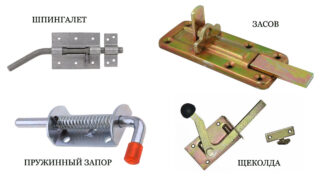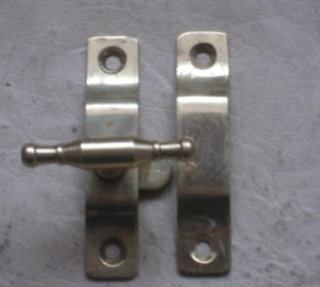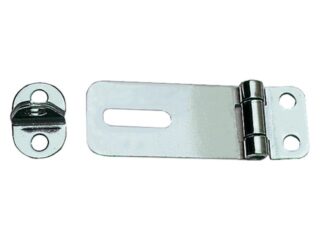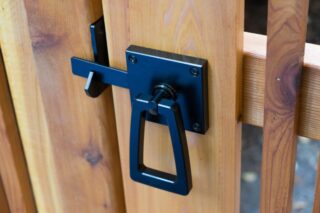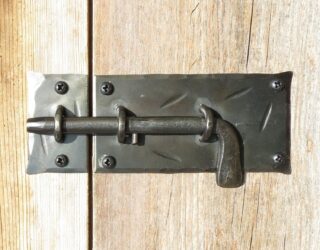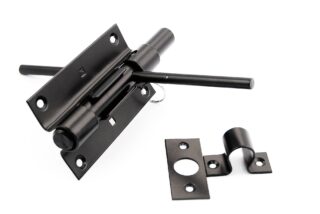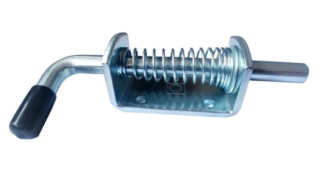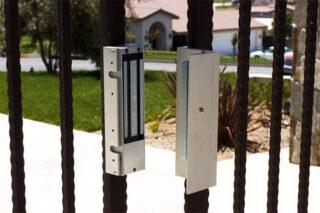Making a latch on the gate with your own hands will not be difficult even for a novice master. The device has a number of advantages over factory products, the design takes into account the features of the door leaf. There are several options to explore before getting started.
Requirements for locking devices
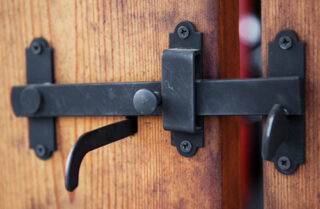
When choosing the design of the gate closing mechanism, a number of general requirements are taken into account, as well as the type and material of which the door is made.
The device must provide:
- protection against opening by unauthorized persons during the absence of the owners and at night;
- reliable fixation of the door leaf in any wind;
- uninterrupted operation in all weather conditions;
- rust resistance;
- ease of manufacture;
- ease of use (ergonomics) and safety;
- compatibility of appearance with the general design of the fence and wicket;
- manufacturability in manufacture, installation and operation.
When determining the required type of locking device, the features of operation must be taken into account. For example, for a gate from the patio to the garden (vegetable garden), there is no need for a clever opening secret. The door to the street should open from both sides, and the lock should include a secret mechanism against intruders and casual visitors.
Constipation types and classification
The classification of locking devices and the requirements for them are determined by GOST 5089-2011 “Locks, latches, cylinder mechanisms. Technical conditions ".
The document identifies three types of devices:
- Locks are products intended for locking protective structures, which have security properties.
- Latches for fixing the door leaf in the closed position.
- Latches with locking mechanism: products used to fix the door in the closed position, equipped with a locking mechanism.
Latches, in turn, are classified according to the following criteria:
- installation method: mortise or overhead;
- right, left, universal;
- one- and two-sided, depending on the possibility of opening;
- principles of work - mechanical, electromechanical, electronic, magnetic;
- the execution of the bolt - rectangular, with several bars of rectangular or circular cross-section and with a beveled end (latch bolt).
Factory products are subject to certification tests, but homemade devices may not be inferior to them in quality.
Basic structural elements
- hulls;
- a drive element (handles, keys) that unlocks / locks the door;
- an executive element that transmits movement from the key (handle) to the bolt, bolt;
- locking (reciprocating) strip - parts with a hole for the bolt entry;
- a bolt that serves as a door lock when closed;
- leash, details for moving the bolt.
The composition of the parts may vary with different versions.
When making a lock on a gate with your own hands, you must comply with all the requirements for locking devices.
Focusing on the design features and the principle of operation, the following types of door locks are distinguished in everyday life:
- Latches are mechanical or semi-automatic devices.The working body is a metal plate with a lever-handle. When closed by spring or gravity, the valve falls into the groove of the striker. To open, apply force to the lever and lift the lock plate or use the handle to remove the bolt from the groove. Latches can be self-locking or manual.
- The gate valves consist of a bolt with an attached handle. To close, it is necessary to push the metal pin or plate into the groove, hence the name.
- Espagnolette, a type of lock with a round bolt bar sliding inside the body.
- The gate is usually called a large-sized gate valve, designed to fix massive gates and gates, garages. Often equipped with return springs and grooves for fixing the working body in the closed position.
At home, latches, latches and spring bolts are made to lock the gates. Each of these devices is most suitable for solving specific tasks, has a number of advantages and disadvantages.
Making a homemade heck
There are several types of latches for home use, from simple rotary to automatic.
Swivel latch
To manufacture the device, you will need a steel strip, self-tapping screws, bolts and nuts. Prepare tools from:
- grinder or hacksaw for metal;
- drill with drills;
- hammer, pliers, vise;
- ruler, tap or pencil;
- welding machine.
For finishing, they purchase a primer and paint for outdoor use.
The simplest product consists of a bolt, a counter strike plate, an opening handle, a limiter.
All parts are treated with an anti-corrosion primer and painted before being installed on the door.
Manufacturing algorithm:
- A bolt 15–20 cm long is cut off from the steel strip.
- A hole is drilled in one side of the valve for the fastening bolt.
- Weld or bolt on the handle for easy opening.
- Having drilled through the door leaf, the bolt is fastened with a bolt and nut to the door leaf.
- A washer 2-3 mm thick is installed between the door and the hook so that the bolt does not rub against the door when moving.
- A striker is made from a steel strip by bending the part in a vice and drilling holes for fastening.
- Prepare a travel stop, attach it to the door leaf.
- Lubricate moving parts.
The simplest one-sided latch is ready to go.
So that the device can be used, a hole is drilled in the canvas on both sides and a handle is installed on the front side of the door. The handle can be detachable. Thus, a secret lock is obtained, which only owners or people who are privy to secrets can open.
Padlock latch
For the manufacture of a latch on a gate with a padlock, lugs are attached to the movable and fixed parts by welding.
Variants and drawings are easy to find on the Internet.
Such a device can serve as a gate for a summer residence. Here, the castle protects from random intruders or hooligans, and not professional thieves.
Self-locking latch
The simplest version consists of a bolt rotating in a vertical plane and a striker, the front part of which is cut off at an angle.
When the door is closed, the bolt slides along an inclined plane and at the end of the movement, under its own weight, is lowered into the slot.
To open the wicket, the bar is raised using a rotating handle made in the form of a ring or any other shape.
It is necessary to make self-locking bolts on the wicket exclusively double-sided.Otherwise, if all residents leave the site, it will be impossible to open the door, you will have to climb over the fence.
Lattice making
Espagnolettes cover the gate on one side.
The simplest device consists of several parts:
- guide body;
- bolt;
- strike plate;
- handles for manipulation;
- travel stop.
A bolt is made from scrap materials: a metal plate, a suitable piece of smooth reinforcement. For fastening, you will need self-tapping screws, screws or bolts with nuts.
Work algorithm:
- Measure the distance between the gate leaf and the opposite post in order to cut the working body of the required length. The dimensions are chosen so that the bolt has a sufficient power reserve, and it overlaps the striker by at least 2 cm when closed.
- Connect the details of the bolt by welding.
- A travel stop is welded to prevent valve parts from falling out of the body.
- Color the details.
- Mount the bolt on the door.
The device is now ready for use.
Double-sided latch
Finish the work by welding the handles from the inside and outside of the wicket.
The disadvantage is that the door will not be locked, thus the path to the site will be free for any person. At the same time, such locks securely fix the gate from the effects of animals and the wind.
The espagnolette can be closed with a padlock, for which the eyes are welded onto it.
Spring bolt
It is not difficult to make the device yourself, taking the factory design as a basis.
For work, you will need a grinder, welding and a drill.
In the closed position, the valve is held by a spring. If it is necessary to open the door, pulling the handle and overcoming the resistance of the spring, move the bolt. For fixing in the open position, at the end opposite to the counterplate, there are two petals, for which the handle is wound.
Variants of locks, when the springs act on a ball or cylinder for wickets, are of little use - due to wind loads, the canvas will constantly move. Ball valves are used exclusively for interior doors.
Electromagnetic constipation
The device must be installed discreetly under the wicket trim or in some kind of enclosure to protect it from precipitation and icing.
Using unnecessary or the cheapest car alarms, they make locks with remote opening.
The electric lock magnet is triggered when voltage is supplied from the control unit or works from a hidden button.
The disadvantage of the design is the impossibility of locking - with each closing, it is necessary to activate the movement of the activator rod.
Operating rules
Difficulties in the operation of wicket latches are caused by the influence of natural phenomena. This is especially noticeable in the autumn-winter period. At high air humidity, the metal actively rusts, which can cause the mechanism to jam. In addition, rust forms streaks, impairing the appearance of the gate. To prevent corrosion in spring and autumn, the valves are removed, treated with rust and painted.
Some craftsmen blacken steel, making it resistant to moisture.
The danger is posed by night frosts after a thaw.The accumulated moisture can solidify on the bolt, preventing its movement in the housing. It is advisable to protect device parts from natural phenomena. For this, various enclosures are made for hidden installation.
If there is evidence that severe frosts are possible at night, in the evening it is necessary to wipe the moving parts dry, removing moisture, then in the morning the bolt will be operational.

